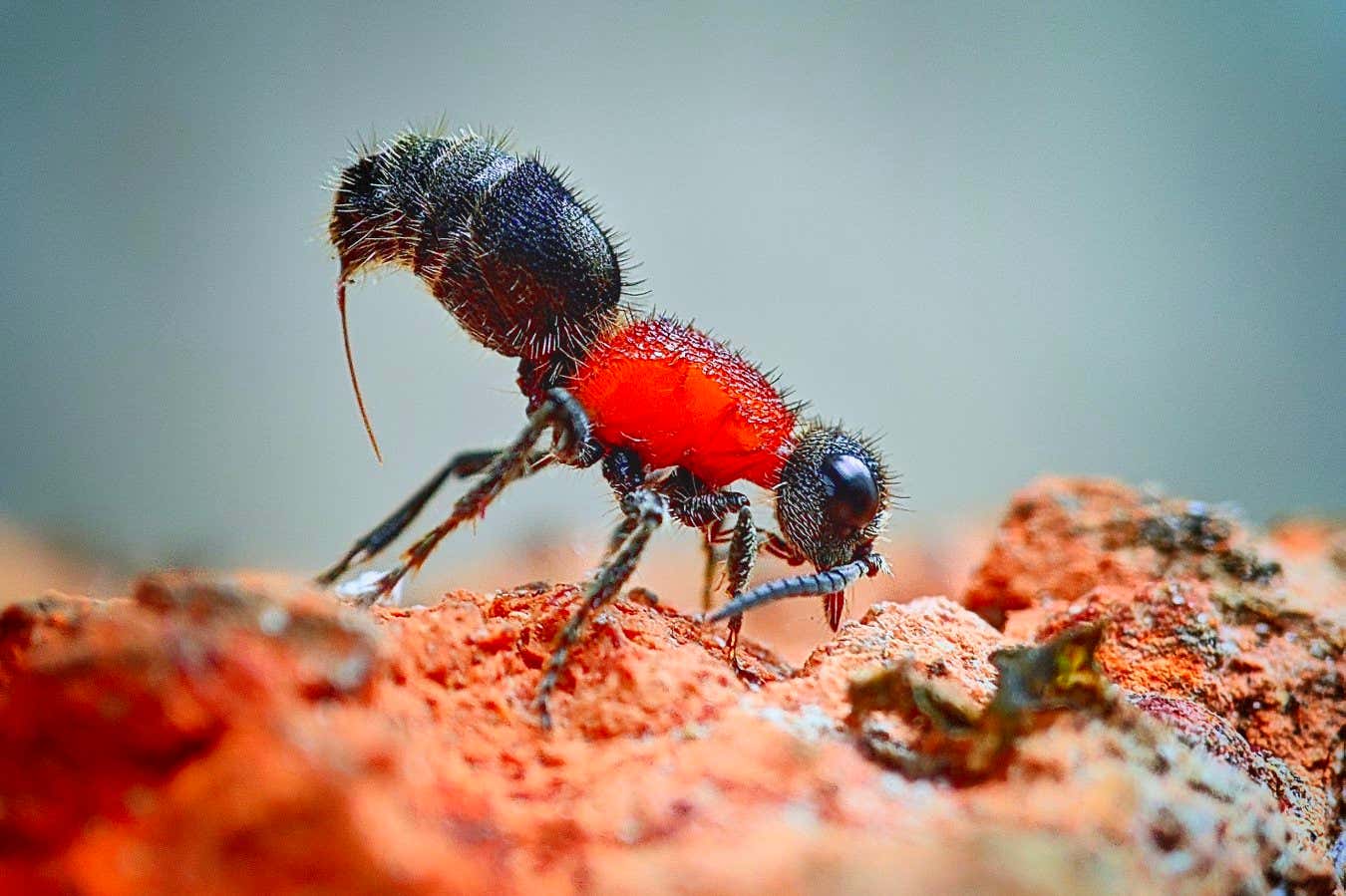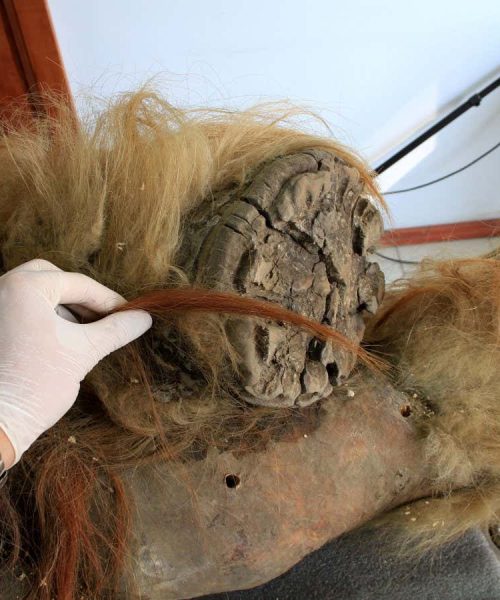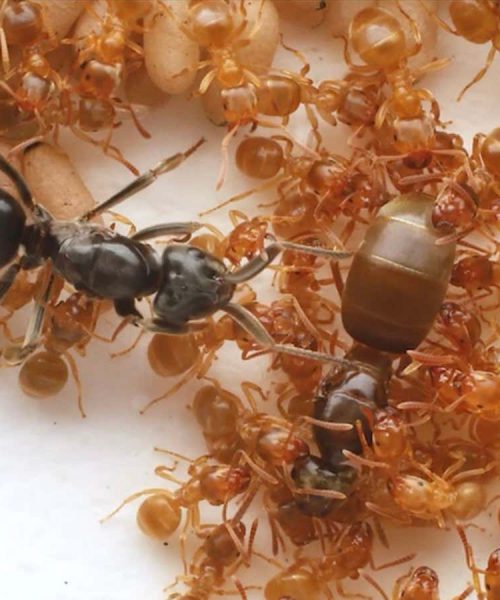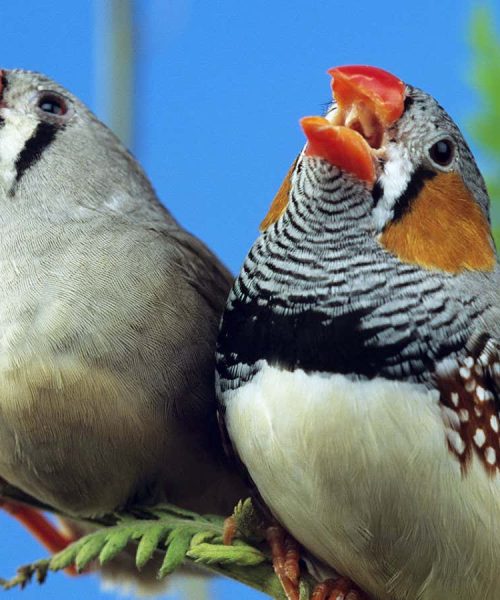
Velvet ants sting by injecting venom from their abdomen
Jojo Dexter/Getty Images
The sting of a female velvet ant is one of the most painful in the animal kingdom. Now, researchers have discovered that these insects have multiple proteins in their venom that make it exquisitely effective against a wide range of victims, including invertebrates, mammals, birds, reptiles and amphibians.
Velvet ants are in fact a family of wingless wasps with more than 7000 species. The researcher Justin Schmidt, who invented the Schmidt sting pain index, described their sting as “explosive and long-lasting, you sound insane as you scream. Hot oil from the deep fryer spilling over your entire hand.”
Advertisement
To investigate what makes it so painful, Dan Tracey at Indiana University and his colleagues asked members of the public to carefully collect female scarlet velvet ants (Dasymutilla occidentalis) from sites in Indiana and Kentucky.
They tested the venom on fruit flies (Drosophila melanogaster), mice (Mus musculus) and a Chinese mantis (Tenodera sinensis), a potential predator of velvet ants.
One of the peptides that the team isolated from the venom, called Do6a, clearly caused a response in insects but, surprisingly, not in mice.
“So this means that the venom has evolved to have components that are specifically targeting pain-sensing neurons of insects and other ingredients are targeting the mammals,” says Tracey.
The team further tested this by allowing a praying mantis to attempt to capture velvet ants.
“We discovered that the velvet ants always escaped from the grip of the mantis by stinging it in self-defence,” says Tracey.
However, mice did show strong pain responses when tested with other peptides isolated from the velvet ant venom, called Do10a and Do13a.
After finding the peptides that activate neurons, the researchers compared the venom peptide sequences from four other velvet ant species.
“All of them have an almost identical version of the peptide that potently activates insect pain-sensing neurons,” says Lydia Borjon, a team member at Indiana University. “They also have some peptides that look similar to the general neuron activators, but with some differences. So, it is likely that pain is caused in a similar way in other velvet ant species.”
The research could help to develop new pain treatments for humans, says Borjon.
Topics:





